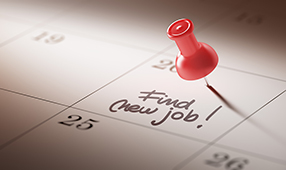Key takeaways
- Even if you don’t have a financial safety net, there are steps you can take in an emergency
- Government programs, NEA benefits and emergency loans for teachers are available to help support you through difficult times
- Cut expenses and build emergency funds now to better position yourself for the future
- Purchase insurance, including income (aka disability) protection, for expenses you can’t easily cover without assistance
If life in a world impacted by the pandemic has taught us anything, it’s that we should expect the unexpected.
Or, better yet, prepare for the unexpected. The COVID-19 pandemic created a variety of circumstances that have impacted the financial stability of many Americans. Initial jobless claims are increasing again, and various obstacles keep people from returning to work even though job openings often outnumbered those looking for work during the pandemic.
And educators have faced the additional burden of adapting to on-again, off-again in-person instruction.
The following tips and resources—including programs that NEA Member Benefits offers to members—can help you navigate it all and find financial emergency assistance, whether you’re planning ahead to mitigate risk, or if you’re currently facing a financial hardship.
Tips for responding to a sudden, unexpected emergency
Whether a job loss or furlough, a damaged car, a major home repair, a natural disaster, an unexpected tax bill, or a significant healthcare expense, financial emergencies tend to arrive at the worst times. Many people find themselves in these situations with no savings and less-than-perfect credit.
You may feel overwhelmed, but there are resources that can help you make it through.
If you will be experiencing an extended financial hardship
- See if you qualify for government assistance. If you and/or your spouse are out of work, USAGov (which is part of the U.S. General Services Administration, and was formerly known as the Federal Citizen Information Center) posts an abundance of resources. In addition to information about applying for unemployment benefits, extending health coverage and acquiring short and long-term disability coverage, it provides links by state regarding benefits available under COVID-19 aid programs.
- Tap into your union benefits. Use NEA Member Assistance Resources, which are designed to help NEA members through involuntary layoffs, FEMA-declared natural disasters and more. You’ll find help with many NEA Member Benefits programs, as well as how to contact the NEA Member Benefits Member Advocacy Center.
- See if family can help. If you have a family member or loved one who could help out, you could set up a low-interest emergency loan. Or, gifts up to $17,000 in 2023 are tax-free for the giver. But be aware of how borrowing money could affect family relationships. If you do accept a loan, make sure you have everything in writing. Documentation protects everyone involved and ensures the terms are clearly understood.
- Borrow from your retirement plan. While it should be considered an absolutely “last resort” option, you can borrow from your 403(b) retirement plan. The maximum amount allowed is either the greater of $10,000 or 50% of your vested account balance up to $50,000. (For example, if you have an account balance of $40,000, you can take out a maximum loan of $20,000.) You must pay off the principal and interest within five years.
- Take a hardship distribution from your retirement plan. A hardship distribution from your 403(b) account presents another “last resort” option. You can qualify if you demonstrate “an immediate and heavy financial need” on the part of yourself or, in certain cases, your spouse or dependents. You can take this distribution for medical expenses, tuition, payments to avoid eviction or a mortgage foreclosure, funeral costs and damage to a residence. It’s possible that you could qualify to take a hardship distribution without paying the usual 10% penalty for early withdrawal, even if you’re younger than 59 1/2. You will likely have to document that you do not have other resources to fund for the need, and that you’ve exhausted any loans/distributions that are available from the plan. The amount of the hardship distribution cannot exceed what’s required to cover the hardship expense (as well as income taxes owed due to the withdrawal).
If you have a sudden, major expense
- Consider applying for an NEA Personal Loan. Through the NEA Personal Loan, you can apply for a loan up to $40,0001 to transfer and consolidate higher-interest debt or address major expenses. Fixed rates with no collateral required can help get you over a financial hurdle.
- Take out a home equity loan or line of credit. With a home equity loan, you receive a lump sum all at once. With a HELOC, you access a line of credit that you can withdraw from —typically up to 10 years—just like your bank checking account at an ATM. When you pass the withdrawal period, you start repaying the outstanding balance that you borrowed and interest owed, and this process could last up to 20 years. The HELOC interest rate is variable, but is often lower than other common loans and could be tax deductible if you’re using it for home repairs.
- Contact a credit union for a loan. If you have a lower credit score, consider a loan from a credit union and avoid taking out a payday loan or other risky types of loans. These not-for-profit organizations tend to look at your financial situation as a whole, according to NerdWallet, and may be willing to lend to people who don’t qualify for other kinds of loans.
- Explore “zero interest” financing options, if you know you can repay. Many companies offer 0% interest rate financing for appliances, new roofing and the like, but be aware that the 0% window will last for a limited period such as 12 months. If you don’t pay it back within the time allotted, then a hefty interest rate may kick in. Plus, you may owe back interest for the full price of the purchase from the date that you bought it.
- Pay for what you need now over time. “Buy now, pay later” services such as Affirm and Klarna have become increasingly popular.
Tips for preparing now for possible financial setbacks
You often know when a major expense is right around the corner—you’ve been putting off a medical procedure, your laptop has slowed to a crawl, or your car is on its last legs. You realize you have some time to set aside money, but not an indefinite amount.
The following tips can help find money to build a cash cushion as well as insure against potential hardships.
- Build a “rainy day” and an emergency fund. If there is any proven strategy for preparing yourself in advance for the unknown, it’s building your rainy day and emergency funds. The rainy day fund is the smaller of the two—aim to set aside $500 at first and then add to it as you can—so you can readily handle a car repair or appliance replacement. An emergency fund takes a longer-term view to account for a loss of income over an extended period. You should develop a plan to eventually set aside no less than three months of living expenses, and, over time, accumulate at least six months of living expenses.
- Revisit your household budget. There are many ways to cut back on spending such as making meals at home, avoiding impulse buys and cutting back on cable. In reviewing what you spend and what you can eliminate, try to distinguish “needs” (food, utilities) from “wants” (new clothes, electronics purchases) and cut back on the latter. Another tip: Conduct an inventory of all of your monthly subscriptions—you’d be surprised at how many you hardly use at all!
- Insure what you can’t financially cover yourself. Evaluate your current policies to see if you have any insurance gaps. Take advantage of programs NEA Member Benefits offers specifically to educators, such as life insurance and auto and home coverage. Also consider income protection insurance, also called disability insurance, which can help you pay some monthly expenses if you are unable to work due to covered sickness or injuries. Your income is a valuable asset, and ensuring you’re covered to pay your bills while you recuperate can reduce stress and financial strain. See how the NEA Income Protection Program2 can help.
- Reduce large recurring expenses to improve cash flow. For example, for many educators, student debt payments are a sizable portion of your monthly budget. Reducing or eliminating some or all of your student loan debt could help free up cash that you can save up and use elsewhere when you really need it. The NEA Student Debt Navigator makes it easy to assess your current student loan situation and see whether you can reduce your monthly payments or attain student loan forgiveness on some portion of your student debt. Find out more about teacher loan forgiveness, how we help educators find student loan debt relief, and try the free tool today.
- Earn extra cash by selling unwanted stuff. From old toys to discarded smartphones to books you’ve finished reading, you can make a nice chunk of change while decluttering your home by selling items on sites such as eBay, Amazon and Bonanza. You can also try Facebook Marketplace, where you sell stuff based upon your location to eliminate shipping logistics and costs. Make sure you take nice, inviting pictures of your products, and write up a tidy but detailed summary which includes measurements, age and special features.
- Consider starting a part-time business. Many experts say we’re living in what’s called “the gig economy,” and that certainly benefits those seeking to set aside backup funding for whatever comes up. As a teacher, you’d qualify as a tutor—even if you have to tutor over Zoom for a while! But you can also assess your interests and talents beyond the classroom—perhaps home improvement, computer repair, writing, coaching, graphic design, language translation, etc.—and apply them to earn money on the side. Here’s how a few of your fellow educators have made their pastimes pay.
1 This Loan cannot be used for postsecondary educational expenses or tuition, or to consolidate postsecondary education loans. Exclusions and limitations may apply.
Loans are made and serviced by First National Bank of Omaha (FNBO®).
2 The NEA Income Protection Program is disability income insurance underwritten by American Fidelity Assurance Company.
ESB-8216-0322










